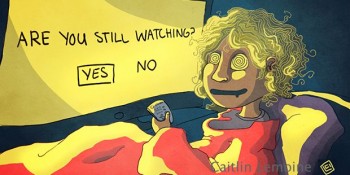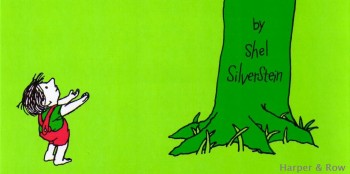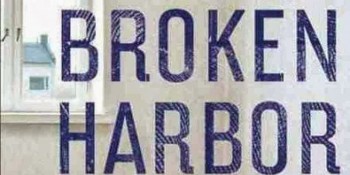Reading history books is tough. Even the most voracious readers often find it difficult to dive into a history. History books have a tendency to be overly academic, and even fans of the subject may have a difficult time with these works. What follows is a list of presidential biographies that are mostly easy to read and teach history in a way that is simple to follow. These authors turn their revered subjects into human beings, complete with flaws, problems, and goals.
American Lion: Andrew Jackson in the White House by Jon Meacham
Andrew Jackson is a pretty controversial president, and Jon Meacham captures perfectly the profound, contradictory nature of the nation’s seventh chief executive. Jackson is credited for expanding the very scope of democracy, yet he ruled with an iron fist, spit in the face of the Supreme Court, and owned slaves. He was a rough, rugged, angry, and vicious man who could also shake hands and behave cordially with the elites of Washington. Jackson is known for forcefully removing the Cherokee from their lands, yet he adopted a native boy as his son. He hated violently, and he loved sincerely.
Meacham displays the contradictions of Jackson’s personality and the drama that defined him by dividing the book into chapters based on each soap-operatic episode of the man’s life. You are able to more easily understand Old Hickory’s nature by learning about his courtship and loss of his wife, Rachel, his feud and friendship with Thomas Hart Benton, the Peggy Eaton affair that led to the resignation of Jackson’s entire cabinet, the fight over the National Bank, and his vicious, personal disputes with John Quincy Adams, Henry Clay, and John C. Calhoun.
Meacham’s American Lion is a great read that displays the evolution of a nation through the lens of the life of one controversial man — a man who lived through the American Revolution and died trying to prevent a Civil War.
Lincoln at Gettysburg: The Words That Remade America by Garry Wills
Lincoln at Gettysburg is a much more intellectually challenging book than the rest on this list, but it is an important one to recommend. The book is short but dense, so take your time when reading this work.
Garry Wills sets out to explain the historical, political, philosophical, and even literary context of Abraham Lincoln’s famous speech on a hallowed Pennsylvania battleground. You will learn the influences on Lincoln’s mind, from Daniel Webster to Ralph Waldo Emerson, as well as his intentions when making the Address: Lincoln’s goal was to change the purpose of the war, to reclaim the Union’s status as righteous warriors from a Confederacy that was close to gaining help from European powers. And while Lincoln’s short speech was actually right in line with what was expected of him, it achieved a level of notoriety that revolutionized American literature and set the stage for writers like Mark Twain.
Wills makes you think harder about a speech that many Americans know snippets of without understanding the meaning behind the words. The book ties together 100 years of American history in dissecting a single 272-word speech by viewing it from every angle. The reading is demanding but also enlightening and incredibly satisfying.
Destiny of the Republic: A Tale of Madness, Medicine and the Murder of a President by Candice Millard
When concocting a list of the most interesting presidents, few would rank James A. Garfield among the Top 30. But that is almost exclusively due to his short time as the nation’s leader. Candice Millard does a masterful job of explaining the story of Garfield’s presidency and its abrupt end at the hands of an assassin, making it a much more compelling tale than any history class has been able to tell.
Garfield, more than perhaps any other commander in chief, is a victim of boring history classes. To many, he is just a name in a list of 44 presidents. And Millard even highlights this fact to capture the true tragedy of the nation’s second presidential assassination: Garfield just didn’t have enough time to make a real impact. The assassin Charles Guiteau’s pulling of the trigger robbed us of a good man with good intentions who could have gone down in history as one of America’s greats.
This book is not just about Garfield. It is just as much a book about Guiteau and Alexander Graham Bell. They were all men on a mission: Garfield is determined to end the spoils system and the corruption running rampant in the government. Guiteau is on a mission to gain a government post, which he believes he deserves for a single speech in which he praised candidate Garfield — and when he is not awarded the job, he begins a new mission: to end the president’s life. Bell’s mission is to save the life of the president by quickly inventing an early version of the metal detector to track the bullet that came from Guiteau’s gun barrel; Garfield stays alive long enough for Bell to use his invention, but due to the doctor’s arrogance and monarchical control of the situation, Bell is unable to find the bullet.
Garfield’s America was in a state of change, and much like Meacham’s American Lion, Destiny of the Republic displays the country’s tremendous technological advances on display at the end of a presidency: Jackson was the first president to leave office in a train, and Garfield was the first president who could have been saved by modern science, including antisepsis, which was gaining popularity in other countries at the time.
The President and the Assassin: McKinley, Terror, and Empire at the Dawn of the American Century by Scott Miller
Much like Millard does with Garfield, Scott Miller makes President William McKinley interesting by framing his life alongside his assassin and the popular figures of the era. Unlike Guiteau, who was driven by madness, McKinley’s assassin, Leon Czolgosz, was driven by philosophy — and very much understood what he was doing by killing the president.
McKinley’s presidency marked many significant changes in America, including the end of non-intervention as U.S. foreign policy, the beginning of the American empire, and the expanse of American trade around the globe — all a result of the Spanish-American War. While the book doesn’t apologize for McKinley’s actions as president, it does explain them in a way that shows McKinley as a conflicted character who honestly believed he was doing what was best for the country and the world.
Czolgosz’s path is fascinating as well, as Miller looks at a man who truly believed in anarchism and set out to bring the world closer to that ideal. In many ways, Miller leads you to better understand Czolgosz and his crusade in an almost sympathetic light: McKinley was the president of the moneyed interests in the time of the robber barons, and his death did lead to the presidency of Theodore Roosevelt, who instituted sweeping reforms aimed at helping the middle and working classes. Certainly, killing the president was the wrong course, but Czolgosz’s actions really underscore the growing sentiments of the working class at the time.
1920: The Year of the Six Presidents by David Pietrusza
Want to learn about several presidents all at once? The Year of Six Presidents tells the story of, well, seven presidents. Six of them — Theodore Roosevelt, Woodrow Wilson, Warren G. Harding, Calvin Coolidge, Herbert Hoover, and Franklin D. Roosevelt — competed for the presidency in 1920, and a seventh, William Howard Taft, was awaiting the opportunity to join the Supreme Court.
David Pietrusza takes you on a journey through the lives of all seven men as they rise to greatness and attain their respective presidencies. Along the way, you will learn about the flaws and neuroses of each president, like Harding’s love for women and Teddy Roosevelt’s belief that everybody but him did a poor job as president.
Adding to the intriguing tale are the era’s defining issues, including Prohibition, the League of Nations, and women’s suffrage, with the election of 1920 being the first time in American history that women had the right to vote in all 48 states.
Pietrusza tells of Teddy Roosevelt, who was an early favorite to return to the Executive Mansion but died a year before the election; Wilson, who was suffering after a stroke but, as the incumbent, was certain he would win a precedent-breaking third term; and Hoover, who was riding a wave of popularity following his actions in Belgium during World War I but would not be able to secure his party’s nomination until 1928. Pietrusza tells the tale of 1920’s ultimate victors, the unlikely candidates Warren G. Harding and his running mate and successor Calvin Coolidge, along with their vanquished opponents, Al Smith and his running mate, the future president Franklin D. Roosevelt.
All seven Presidents featured in this book get their stories told, and all seven certainly seem more human when Pietrusza is done.
If you’re looking for some good reads that you’ll find both interesting and educational, check out these five books, read Lincoln’s twice, and see just how incredible — and flawed — these historical demigods really were.



